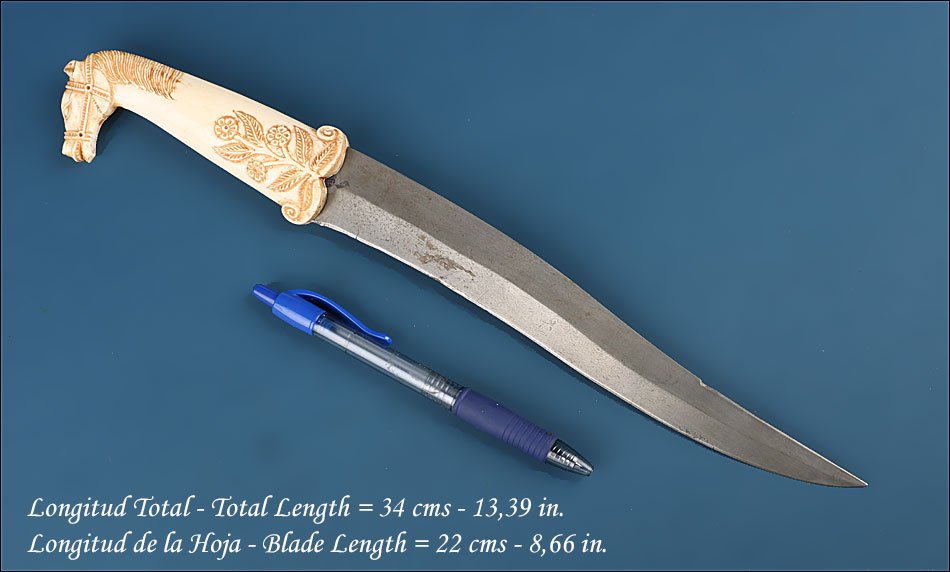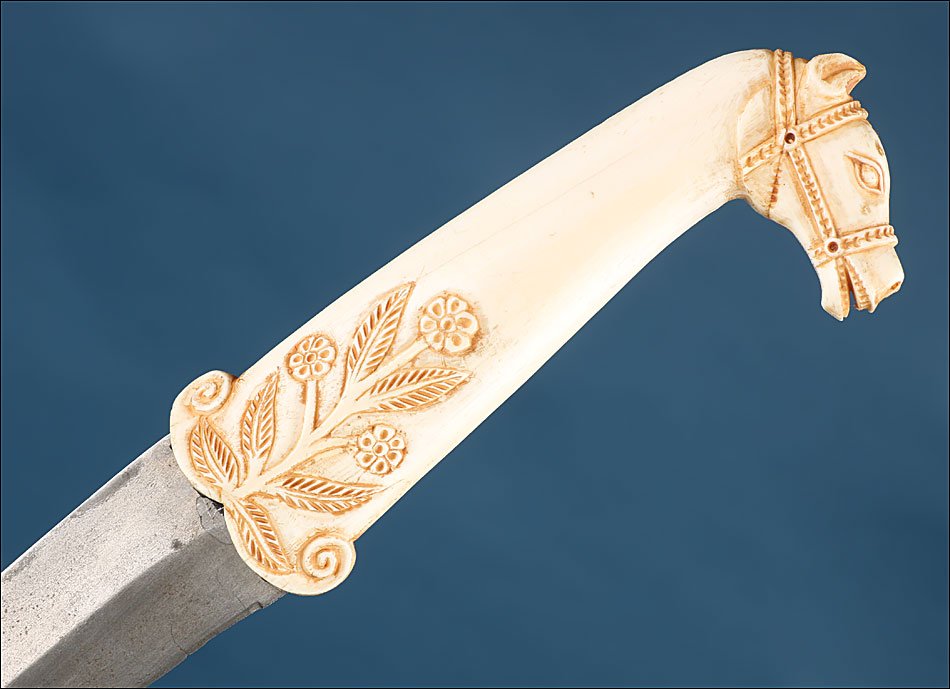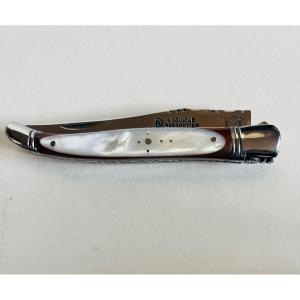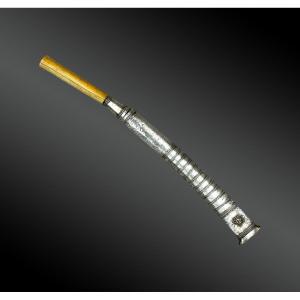The grip not only stands out for its sculptural form but also for the floral decoration, likewise engraved on the ivory with great elegance. This vegetal motif, formed by branches, leaves, and stylized flowers, decorates the transition between the handle and the blade. The blade itself, made of high-resistance steel, has a curved and elegant shape, typically Oriental, slightly symmetrical, and ending in a sharp point, reflecting its original function as a ceremonial or status weapon.
Despite being over a century old, the blade remains in solid, well-preserved condition, with a patina that attests to its age while retaining its presence. The choice of hand-carved ivory, typical of noble or high-rank items within the Mughal Empire, makes this a rare and highly desirable piece. The equine motif is no coincidence: the horse, a symbol of strength, nobility, and loyalty, was revered and associated with warriors.
A piece like this is not only decorative—it tells a story. Ideal for collectors of antique weapons, lovers of Asian culture, or decorators seeking to add a unique item to a refined space. Its refined aesthetics and symbolism would make it spectacular in a display case or atop an elegant base, fitting harmoniously in a library or study.
Acquiring it means owning a piece of history, art, and tradition.
Dimensions: Total length: 34 cm (13.39 in), Blade length: 22 cm (8.66 in)
History of Mughal Daggers
Daggers from the Mughal Empire, known for merging Persian, Turkish, Mongolian, and Indian art, were far more than weapons: they were true works of art and power symbols. From the 16th to the 19th centuries, Mughal elites and Hindu noble warriors carried richly decorated daggers, often with hilts made of jade, ivory, or even precious stones. These pieces were handcrafted by highly specialized artisans working for the royal court. The Khanjar, in particular, is a curved-blade dagger that originated in Arabia and spread to India, where it acquired local aesthetic features such as sacred animal representations. The horse-head motif on hilts is a cherished decorative tradition linked to the veneration of the horse as a symbol of status and loyalty. These daggers were not only used in combat but also served as ceremonial attire with strong symbolic value. Many are preserved in renowned museum collections such as the Victoria and Albert Museum in London or the Jaipur Palace Museum. Ivory-handled daggers are especially sought after in the antique market for their beauty and the scarcity of the material, now protected by international regulations. The present piece, with its excellent condition, fine carving, and late colonial Indian origin, stands out as a highlight of this artistic and martial tradition.








































 Le Magazine de PROANTIC
Le Magazine de PROANTIC TRÉSORS Magazine
TRÉSORS Magazine Rivista Artiquariato
Rivista Artiquariato